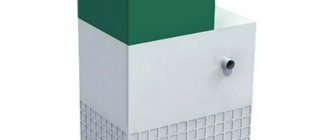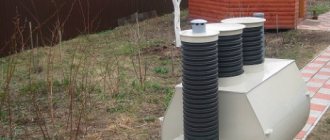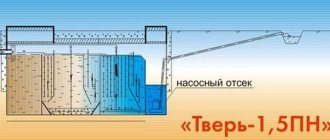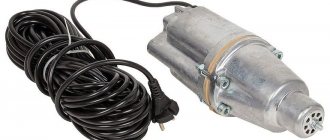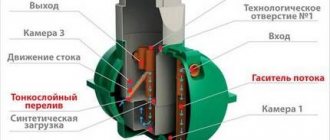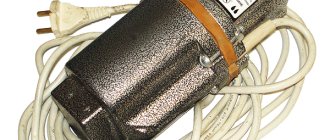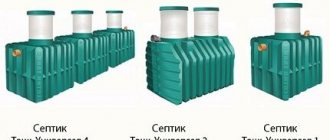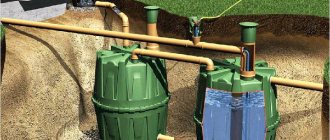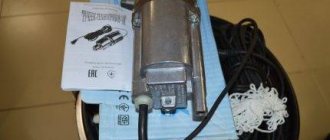Domestic pumps of the Agidel brand mean reliability at a budget price. How do the units operate, and what technical parameters should you pay attention to when choosing a pump? Which model should you choose? How to ensure proper pump operation? What safety rules must be followed during long-term use?
In this article, we examined the main technical characteristics of the two main models, their advantages and disadvantages, cost, installation, operating features, options for installing electric pumps, do-it-yourself repairs, maintenance and storage rules. We also added information about warranty obligations.
The material contains useful additional materials, tables, diagrams, videos, recommendations for maintenance from specialists, as well as an official document - instructions from the manufacturer.
Trademark "Agidel": brand history, product review
The Ufa Aggregate Production Association (UAPO) has been producing Agidel brand pumps since the 70s of the last century. Moreover, many owners of similar products still use pumps from the first batch.
The secret of such survivability is explained by the initially high quality of components and the very successful design of Agidel pumps.
Moreover, the production of components, as well as the assembly of the unit, is carried out on the basis of the production facilities of UAPO. That is, Agidel pumps are manufactured in the same workshops where complex units for the aviation industry or high-tech equipment for the oil and gas industry are produced.
In addition, under the Agidel brand, UAPO also produces contactless ignition systems, spark plugs (incandescent and spark), and corundum ceramics. And UAPO itself is a fairly respected brand in narrow circles, producing generators, plasma ignition systems, protected electric motors and components for gas pumping stations.
Models “M” and “10” are improved versions of the first pump of the BC series from Ufa manufacturers, which was produced for more than forty years.
In a word, the Agidel brand is a very respected trademark, founded by a well-known domestic manufacturer, whose products are famous in quite specific circles (oil and gas production, aircraft manufacturing, defense industry, and so on).
Kinds
The range of products manufactured by this manufacturer is quite diverse, but the range of pumps, despite its almost half-century history, remains more than modest.
The company focused its attention on the production of 2 models - “Agidel-M” and “Agidel-10”. The first option costs 4,500 rubles. (manufacturer’s recommended price), second – 6100 rub.
As you can see, both models are quite affordable, which is why they are appreciated by customers. The manufacturer provides a one-year warranty
(manufacturer's recommended price), the second - 6100 rubles. As you can see, both models are quite affordable, which is why they are appreciated by customers. The manufacturer provides a one-year warranty
The first option costs 4,500 rubles. (manufacturer's recommended price), the second - 6100 rubles. As you can see, both models are quite affordable, which is why they are appreciated by customers. The manufacturer provides a one-year warranty.
Agidel pumps are designed to work with clean water and can be used in autonomous water supply systems and irrigation systems, as well as for pumping and filtering water in a swimming pool or supplying it to a fountain.
Purpose and scope of application
Surface pumps “Agidel” are popular among summer residents and owners of country houses. The units are installed on a flat surface in special containers, utility rooms or under a canopy to protect them from precipitation and sunlight.
Despite its suitability for working with open reservoirs, it is desirable that the pumped water undergo pre-filtration. For example, when using a unit for pumping water from a well, it is recommended to install a bottom filter.
The scope of application of the pumps is quite limited, but it fully satisfies the needs of the owners:
- autonomous water supply system at home;
- irrigation of agricultural crops;
- water supply to water-consuming household appliances;
- filling/pumping out pools and tanks;
- water supply from a well, well, open reservoir.
Agidel pumps are not recommended for pumping water from flooded basements, because... in most cases, the water will contain large suspended particles, which will quickly damage the unit.
Your pump has stopped pumping water and you don’t know what to do? You may find information about repairing an Agidel brand pump useful.
Electric pump “Agidel-10” If you plan to operate the pump in winter, then you need to take care of the insulation system so that the temperature of the environment surrounding the pump is above zero.
User manual
The Agidel pump, the characteristics of which will be useful for you to know before visiting the store, should be installed exclusively on a flat and hard surface. The quality of work during use will depend on this circumstance.
It is important to take care of protection from direct ultraviolet radiation, as well as precipitation. Experts recommend setting up special containers or installing equipment inside the utility room
The first method is more preferable, since long hoses and pipes will reduce the water pressure specified in the instructions.
Design and principle of operation
Agidel electric pumps have a simple monoblock design, characteristic of all centrifugal surface pumps.
Since the time of the first version of “Agidel-BC”, the design of the unit has remained the same, only special protection against overheating has appeared, allowing the pump to be operated without interruptions for a long time.
An electric pump marked M consists of two main parts: an electric motor and a centrifugal pump. In the “Ten”, the set of an engine and a centrifugal pump is also supplemented with a jet pump.
It is responsible for ensuring “self-priming” of water supplied to the system by its centrifugal counterpart.
The electric motor that drives the pump includes a stator with a built-in thermal fuse that protects the winding of the mechanism from overheating.
The electric motor also includes a rotor, bearing shield, and flange. Cooling during operation is carried out by a vane fan, which is closed with a cap.
The operating principle of the pump is based on the action of centrifugal forces, thanks to which the unit provides water supply. The source of centrifugal force is the impeller located on the rotor shaft.
The flange contains cuffs that protect the electric motor from water entering it.
Diagram of the design of the Agidel M centrifugal pump Electric motors of all modifications of Agidel pumps must be carefully protected from the slightest ingress of water - the main reason for their failure.
Water enters the pump through the inlet valve, which also serves as a filter that prevents foreign objects (large particles, debris, rock debris, etc.) from entering the pump.
In the Agidel-M model, this valve plays the role of a shut-off valve when priming the pump before starting.
The housing connector and flange are sealed with a rubber gasket. The “M” model is additionally equipped with an air bleed screw. To install the pump in a vertical position, the housing has mounting holes. Holes in the rack are used for horizontal placement.
Grounding diagram for the electric pump Agidel 10 The pump “Agidel-10” is equipped with a four-core power cord for connecting to the electrical network, which is reinforced with a plug with a built-in grounding contact.
Classifications based on the operating device that affects the flow of water:
- Lobed. The principle of operation is the influence of machines on the pumped consistency of a spinning wheel. Blades are attached to it, which are bent in the opposite direction of its movement. The rotation effect is transmitted from the electric motor shaft to the wheel shaft. The result is the emergence of centrifugal force between the blades and the displacement of water flow to the outlet pipeline. As we can see from the description, this mechanism is multi-stage. Based on the configuration of the wheel and the ability to change the shape of the watercourse, they can be divided into centrifugal, vortex and self-priming.
- Vibrating. This group is characterized by the absence of rotational parts. The impact on water occurs due to the reciprocating movements of the piston. It is activated by a vibrator, or in other words, an electromagnet armature. During the sinusoidal process, the polarity changes twice, during which time the vibrator acts as a shock absorber. As a result of its operation, water vibrations appear, excess is pushed out, and new water enters the inlet valves. Used primarily in wells.
Advantages: no electric motor, saving money.
Self-priming pumps without pre-filling liquid
Both models have a centrifugal-type pumping mechanism, which is driven by a single-phase electric motor. Centrifugal pumps operate by communicating the pumped conditions of rotational motion. As a result, centrifugal force arises, which creates pressure. Such pumps have a simple design, durability and high efficiency.
The self-priming function means that the device is capable of creating a vacuum and drawing in liquid from a certain depth. Agidel pumps do not need to be immersed in water. That is why the external parts of the device are made of cheaper materials. Models have overheating protection.
The pump is equipped with a 1.5 m long cable. In this case, you can use an extension cord, or immediately replace the cable with a longer one.
Maintenance of the device includes periodic disassembly, cleaning of the impeller and lubrication of the blades. Sometimes it is necessary to replace oil seals marked 8G6477005. As a rule, these operations are carried out during winter assembly of the device. To ensure the pump lasts a long time, it is recommended to install a reliable check valve on the supply line. All joints should be well sealed.
Source: sovet-ingenera.com/vodosnab/nasosy/vodyanoj-nasos-agidel.html#i-4
Right choice
If you are offered to buy a pump from this particular company, then when choosing it you need to be careful and first of all look at its external characteristics
Since cases of counterfeiting of this product have become more frequent recently (both from China and from neighboring countries), attention is drawn to the fact that the colors of the pump body and cap always remain the same. They do not change on the impeller under the hood either. Accordingly, if you suddenly see a similar package and it seems to you that this is the same pump, but its color is slightly different (not bright brown on the body and not dark on the cap), then this means that this is a fake and it is best to refrain from purchasing it
An important note is that all connections in this unit are made using slotted head screws. Speaking about the production process, this is quite difficult to accomplish, so in fakes you can see that the connections are made with ordinary hex bolts
Accordingly, if you suddenly see a similar package and it seems to you that this is the same pump, but its color is slightly different (not bright brown on the body and not dark on the cap), then this means that this is a fake and it is best to refrain from purchasing it. An important note is that all connections in this unit are made using slotted head screws. Speaking about the production process, this is quite difficult to do, so in fakes you can see that the connections are made with ordinary hex bolts.
The final important difference from analogues and counterfeits is that the pump rotor shaft is made of stainless steel. This allows you to use the device for as long as possible, since it is not afraid of any corrosion. All other analogues use ordinary 45 steel, which after a short period of time will begin to rust, accordingly, all the bolts will also rust, and you will not be able to disassemble the device to carry out repairs, even if the correct connection diagram for the Agidel 10 device is used.
All these factors indicate that the cost of the pump is quite high.
If you see a pump on the store counter for a significantly lower price, then it is a low-quality product.
The water lifting depth of this pump is up to 8 m. When the pump is not in use, it is recommended to put it in a dry, warm place. Of course, you can leave it in a cool room, but this will shorten its service life. If you follow all the manufacturer’s recommendations for the next season (spring), you will be able to use the Agidel 10 pump again to the fullest extent, as if you had purchased it just recently. If water suddenly gets into the engine, the engine may catch fire, as a result, connection will become impossible and the pump will have to be replaced.
If you are an amateur gardener or a professional gardener, you need to select a pump efficiently and carefully. If you decide to save money and pay a price slightly lower than what was previously quoted, you may be sold a fake. As a result, you will have to buy new equipment, such as bearings.
Main characteristics
It should be noted that the company’s product range includes only two pumps of this brand, differing in design and principle of operation.
"Agidel-M" is a compact device operating on the centrifugal principle. Placed on the surface in a vertical position. The model without an ejector is designed for lifting water from wells up to seven meters deep. And if you use an ejector with this unit, the efficiency of the pump will double, and the owners will be able to receive water from a depth of up to 15 meters.
The movement of water is ensured when the electric motor is turned on by rotating the shaft with blades located on the axial bushing. The liquid inside the pump chamber is forced into the pipeline under the influence of centrifugal force. And in the center of the impeller, a zone of low pressure appears, which ensures a continuous flow of water from the well through the intake hose.
Main characteristics:
- a pressure of 20 meters is created;
- productivity – 2.9 cubic meters per hour;
- power – 370 W.
Advantages:
- low price;
- the ability to use at a sufficient depth when using an ejector;
- ease of maintenance and operation;
- high reliability;
- low energy consumption.
Flaws:
- The unit is afraid of dry running (it is necessary to fill in water at the beginning of operation).
Average price from 4,500 rubles.
"Agidel-10" is a more powerful and larger model of the self-priming vortex type. Placed on the surface in a horizontal position. The main advantage of the unit is the possibility of a “dry start”. That is, when starting up for the first time, there is no need to fill the pump with water.
The unit body consists of two chambers, like any self-priming pump. Turning on the pump starts the rotation of the impeller (impeller), which creates a vacuum and causes air to be sucked in.
The water in the housing is mixed with air. The movement of water and air creates a vacuum zone, which ensures the suction of liquid through the intake hose. Remaining air is removed through a special technical opening. The unit then functions as a standard centrifugal pump, the operation of which was described above.
Main characteristics:
- pressure up to 30 meters;
- productivity – 3.3 cubic meters per hour;
- power – 700 Watt.
Advantages:
- budget cost;
- long service life;
- the unit is not afraid of dry running;
- ease of maintenance;
- reliability.
Flaws:
- cannot be used at a depth of more than seven meters;
- quite high energy consumption.
Price from 6,000 to 7,500 rubles.
If we compare the technical data, it becomes clear that the second pump has better performance and is able to create more pressure. The main advantage of the first type model is low power consumption (370 watts) and light weight. It allows the use of an ejector, which is important for owners of wells and wells fifteen meters deep.
If power is not the main parameter of choice for owners when purchasing a pump, you can safely purchase a more economical and compact model. The units are no different in build quality and service life.
Comparison with Russian-made units
If we talk about domestic models, then, according to gardeners, there are pumps on the market today that are either superior to the Agidel devices in terms of reliability and performance, or inferior to them. For example, many owners of suburban areas use Whirlwind devices for irrigation and supplying water to the house. These units have received relatively good reviews from consumers. However, according to many gardeners, they are much inferior to the Agidel models in terms of build quality.
Also on the domestic market you can often find “Jumbo” pumps supplied by the Russian company. These models are quite productive and last a long time. However, when pumping water, they, unfortunately, can overheat and turn off.
In terms of undemandingness to voltage indicators in the Agidel network, they are second only to domestic Kama models. In this regard, consumers respond better to the latter. If the Agidel pump does not pump, this may be due to the voltage being too weak. For areas with a problem electrical network, it is still better to buy a Kama unit.
In terms of assembly reliability and performance, Agidel has almost the same good reviews as the Vodomet units that are popular today. The only thing is that the latter are superior to the former in terms of variety of assortment. On the market today there are not only surface, but also deep Vodomet models. So, choosing an Agidel pump for a deep well, for example, will not work. It also produces submersible models designed for installation in fairly long shafts.
Installation
When installing pumps of this brand, you should adhere to three main parameters:
- positive operating temperature;
- as close as possible to the water source;
- flat surface for installation.
Obviously, the ideal solution would be to install an insulated coffer chamber with a flat bottom. In such conditions, the equipment will be able to work even in the winter cold. A close location to a well or well is required due to the sensitivity of the equipment to depth - this is an indicator from 7 to 15 meters, depending on the model and the presence of an ejector.
Installation directly on the well head or well cover is allowed (this is a good solution for summer use). The caisson is installed five or ten meters from the house below the freezing point of the soil.
A good solution would be to install it on a special raft, which is then lowered into the well. But in this case there will be a problem with connecting the electrical cable. It needs to be extended and waterproofed. The standard cable length is 1.5 meters.
Experts recommend using “Agidel-10” for installation in a caisson or mounting on a raft for year-round use. And for seasonal use, you should use “Agidel-M” - a unit that requires adding water before starting and is extremely sensitive to low air temperatures. It can be installed on a flat surface near the well or attached to a special bracket at the well head. For the winter, the pump is dismantled, dried and stored in a warm room.
About hoses
Rubber products, although they are distinguished by plasticity and tightness, cannot be called the best for equipping the Agidel-M pump.
It's all about suction power - the unit creates a vacuum in the hoses, which compresses the plastic material. It is capable of blocking the pressure of incoming water. Therefore, for a country pump of this brand, a plastic hose reinforced with a spiral is purchased. It is also important to check even new recommended hoses - they must be equipped with a strainer. Their position from the bottom is at least 0.5 m
If a well or well is silted, the water source itself requires preventive maintenance, otherwise you can go broke due to equipment breakdowns. The condition of the well walls, the quality of the casing pipes, and the wooden or concrete surface of the well should be regularly assessed.
How to use?
Basic operating recommendations boil down to just two requirements:
- Do not overload the self-priming vortex pump when using it at great depths;
- and for the model it is very important not to allow dry running - it cannot be used without first pouring water into the pump chamber.
When the model is first started, which does not require preliminary filling of liquid into the pump chamber, water appears in the water supply within five minutes. This is how long it takes to fill all the pipes and raise the pressure in the system.
The main technical requirements are:
- to mandatory provision of grounding;
- to thorough waterproofing if the cable has been extended;
- to arranging a raft from materials that do not interact with water (relevant when lowering the unit into a well);
- to take into account the depth of the source and the maximum pressure created by the pump;
- to maintain operating temperature conditions (above zero degrees Celsius).
Repair
"Agidel" are reliable pumps with a long service life. Malfunctions in their operation can occur:
- if the tightness of the water intake hose is broken, the problem is eliminated by replacing it;
- if the electrical cable fails, it is also recommended to replace it with a new one, since numerous twists increase the likelihood of a short circuit;
- when the seals wear out - this breakdown causes a leak in the drainage hole and requires immediate repair.
Obviously, the most serious problem with pumps is seal wear. Damage can be easily repaired with your own hands. For repairs you will need a screwdriver and a set of spanners, as well as a new oil seal.
Work order:
- The casing is removed (it is attached to three external bolts).
- The engine housing is dismantled (four more bolts are unscrewed).
- The cochlea, the part of the body responsible for absorbing liquid, is detached.
- The impeller is removed, secured with one central bolt.
- The anchor is removed from the impeller using a hammer.
- After the armature comes out, you can find oil seals inside, which are pulled out along with the insert located in the middle.
- The seals are replaced with new ones (they are separated by an insert!).
- The unit is assembled in the reverse order.
To ensure a long service life, it is recommended to follow all operating rules specified by the manufacturer in the product technical data sheet.
Mandatory maintenance includes periodic disassembly of the pump, cleaning the impeller or impeller parts from adhering dirt and lubricating rubbing parts (for example, shaft bushings).
KIV provides automatic shutdown of the pump in the event of hydraulic system malfunctions: a broken hose or pipeline, a decrease in the water level in the water source.
To ensure smooth start and stop, the Agidel pump can be equipped with an individual water supply controller (IW), which reduces the risk of electric motor overheating and prevents water hammer in the system.
Troubleshooting yourself
Some problems can be fixed without the help of specialists.
Weak water supply
Poor flow (weak flow or jerky flow) most often occurs when using the wrong water intake hose. When fluid is sucked from the well, rarefied air is formed inside the rubber hoses, which causes compression of the walls. This interferes with the normal supply of water. A hose reinforced with a plastic spiral is recommended for the unit.
A hose reinforced with a plastic spiral is used for water intake.
Replacing the oil seal
Routine repair of the pump involves replacing the seals, because if they fail, leaks begin in the drainage hole.
Let's look at how to replace them with your own hands.
In the diagram, red dots indicate the locations of the bolts that should be unscrewed
- Unscrew the three bolts located on top of the body and remove the casing.
- Unscrew the 4 bolts in the electric motor.
- Remove the motor housing.
- We disconnect the snail by unscrewing the 4 bolts.
- Remove the rubber gasket.
- Unscrew the nut that holds the impeller.
- We take the armature axis out of the impeller (if you can’t get it, “help” by hitting the armature axis with a hammer).
- When the armature and bearing come out of the housing, find the seals in the impeller.
- Remove them so as not to damage the insert between them.
- Install new oil seals, separating them with an insert, and reassemble the unit in the reverse order.
If Agidel pumps are used in accordance with the instructions, they operate stably and require only periodic cleaning and lubrication of parts.
How to ensure proper operation?
To avoid engine breakdowns and damage, you must adhere to the following rules:
- The pump is installed on a perfectly flat surface! In a caisson, this is achieved by pouring a concrete floor.
- It is vitally necessary to install a check valve in the water supply system. Without it, the pump operates with additional load and fails faster.
- The pipes and hose must be of the appropriate diameter (it is indicated in the technical data sheet of the unit).
- It is necessary to ensure the tightness of all connections (it is also periodically checked by the owners during operation).
It is also important to install it as close as possible to the water source, which reduces pressure loss and load on the equipment.
Source: greenologia.ru/eko-zhizn/sistemy/vodosnabzhenije/nasosy/
Maintenance of Agidel pumps: do-it-yourself service
Caring for Agidel brand pumps is not limited to pouring liquid into the working chamber before starting the unit. Sometimes the pump breaks down and does not pump water from the well. Moreover, the cause of the breakdown may be a leaky hose - it can be changed in a matter of minutes, or a deformed oil seal - here you will have to tinker longer.
After all, to replace the oil seal you need to do the following:
Remove the unit casing by removing the three screws located at the top of the housing.
Remove the motor housing by unscrewing the four screws holding this structural element.
Remove the volute by unscrewing the four bolts and removing the rubber gasket sealing this assembly.
Next, you need to loosen the impeller nut to gain access to the pump motor armature. Moreover, the armature axis will have to be knocked out of the impeller with a light blow of a hammer (better than a mallet).
Both oil seals, separated by a gasket, will be mounted on the axle removed from the impeller. Moreover, replacement is carried out by dismantling worn parts and installing new oil seals separated by an old (or new) gasket.
The pump is assembled in the reverse order: installing the axle into the impeller, installing the seal, assembling the volute, installing the motor housing and assembling the casing.
There is no need for other manipulations carried out with your own hands or service. And if you do not overload the “senior” unit and do not operate the “junior” model without first filling the chamber with water, then the Agidel pumps will serve you for at least a couple of decades.
Source: canalizator-pro.ru
Electric pump "Agidel" BTs-0.4-20-u1.1 documentation: instructions from the manufacturer
Ufa Aggregate Production Association
Manual
GENERAL INSTRUCTIONS
1.1. Household centrifugal electric pump BTs-0.4-20-U1.1 “Agidel” (hereinafter referred to as the electric pump), shown in Fig. 1, is intended for pumping fresh water from wells, open reservoirs and wells under the following climatic conditions. — thermocouple range from 0° to — +-40°С, — relative air humidity up to 95% at a temperature of ±25°С. — altitude above sea level, no more than 1000 m.
1.2. When purchasing an electric pump: - check the completeness of the electric pump, - require a note about the date of sale of the electric pump in the operation manual and in the warranty cards, otherwise you lose the right to warranty service.
Claims for missing spare parts from customers will not be accepted.
1.3. Before using the electric pump, please read this instruction manual carefully.
1.4. In terms of the degree of protection against electric shock, the electric pump belongs to the first class of splash-proof type, according to GOST 27570.0-87.
Absolutely forbidden! 1. Connect the electric pump to the network without grounding.
2. Use switches other than the plug connector that is equipped with the electric pump.
3. Deviate from the principle diagram of connecting the electric pump to the network and change the design of the electric pump, including replacing the plugs with a two-pole one without a grounding contact.
This is life-threatening!
ATTENTION! An electric pump is a complex household appliance; the pump must be connected by an electrician assigned to a given section of the electrical network, with a qualified safety group of at least 3. The owner of the pump must engage an electrician at least once a year to inspect the condition of the pump’s electrical wiring.
IT IS NOT ALLOWED: 1. Turning on the electric pump without filling the pump part with water.
2. Using an electric pump to pump a solution of pesticides.
TECHNICAL DATA
2.1. Nominal pressure (suction + discharge + losses in pipelines) is not less than 20.
2.2. The nominal flow (with a total head of 20) is not less than 0.4X10-m3/s.
2.3. Power consumption - 500W +15%
2.4. AC voltage - 220V ±10%
2.5. The weight of the electric pump without the delivery set is no more than 9.2 kg.
2.6. Overall dimensions no more than:
- height - 310 mm.
- diameter - 214 mm.
2.7. The thermal current relay contains silver - 0.01995 g.
CONTENTS OF DELIVERY
3.1. Electric pumps are delivered according to the completeness number; the completeness number is indicated on the label and in the table.
SAFETY REQUIREMENTS
4.1. When installing an electric pump to pump water from an open reservoir, swimming or being in the water near a working electric pump is prohibited.
To avoid accidents, do not leave the electric pump unattended while it is running.
4.2. IT IS STRICTLY PROHIBITED : operating the electric pump without grounding and “grounding” (Fig. 3, 4), without a cap, as well as repairs, check the heating temperature of the electric motor by touch, touch the grounding screw, etc. with your hand when the electric pump is running.
4.3. Connect current-carrying conductors through fuses with 6A fuse-links according to Fig. 3, 4.
It is prohibited to install fuses in the neutral wires.
4.4. To avoid accidents, the electric pump must be reliably grounded in all installation schemes.
Grounding can be done with a bare steel wire with a diameter of at least 6 mm. One end of the wire should be secured to the pump with a grounding screw, and the other end of the wire should be connected to the ground electrode.
The following can be used as a ground electrode: 1. Metal pipes, artesian wells. 2. Metal pipes of buildings and structures (excluding heating systems). 3. Steel pipes or rods driven vertically into the ground, fig. 5 (when using pipes, their wall thickness must be at least 3.5 mm), as well as steel strips with a thickness of at least 4 mm and a cross-sectional area of at least 48 mm2, or wire with a diameter of 6 mm.
4.5. The distance from the grounding conductors to the foundation of buildings and structures must be at least 1.5 m. The upper edge of pipes and grounding conductors made of steel strips must be located to a depth of at least 0.6 m. The grounding wire must be securely fastened to the grounding conductor.
4.6. Grounding is carried out as follows: connect the grounding contact of the socket with a conductor with a cross-section of at least 1.5 mm2 to the neutral wire of the supply network.
Grounding can be arranged using a bare steel wire, one end of which is connected to the pump, and the other to a ground electrode, which can be used as metal structures.
ELECTRIC PUMP DEVICE
Electric pump Agidel figure 1Electric pump Agidel figure 2
5.1. The electric pump (Fig. 1) consists of an electric motor 2, a fan 11 screwed to the electric pump shaft. The electric motor is closed on top by cap 1, under which there is a capacitor and a thermal current relay.
The housing connector with the flange is sealed with gasket 4. Housing 5 is used to secure the electric pump at the site of operation. Screw 14 is used to bleed air from the system when priming the electric pump. The foot valve 9 consists of a housing 6, a filter 8, and a rubber gasket 7.
5.2. The design of the electric pump may differ slightly from that shown in Fig. 1, which is associated with further technical improvement of the electric pump.
5.3. The electrical circuit of the electric motor is shown in Fig. 2. (picture)
Electric pump Agidel pictures 3 and 4
PREPARATION AND OPERATION PROCEDURE
Installation and installation of electric pump
6.1. Before proceeding with the installation of the electric pump, it is necessary to select the correct installation diagram and protect the electric pump from water entering the electric motor.
6.2. Check the inlet valve for leaks by pouring water into it. Drip leakage of water is allowed.
6.3. When the electric pump is equipped with a plastic valve, connect the suction pipeline to the valve using a 03/4-B pipe and a rubber hose.
There should be a thread at one end of the pipe, 20 mm long, the other end of the pipe should be smooth, without burrs or corrosion. Screw the pipe with the wound tow into the pump housing to a depth of 10-12 mm, secure with a nut. Place a rubber hose with an internal diameter of 25 mm and a wall thickness of at least 4 mm onto the second end of the pipe.
Place the other end of the rubber hose onto the plastic valve. Any other connection of the suction pipeline with the valve is allowed, ensuring tightness and not allowing a decrease in the dimensions in the cross-section of the suction pipeline during pump operation of no more than 5%.
When equipping the electric pump with a metal valve, make the connection to the suction pipeline in the following way: take a pipe with a 3/4-V thread at the ends, screw one end of the pipe with tow wound into the suction hole of the electric pump to a depth of 10-12 mm and secure with a nut. To ensure tightness, tow is wound between the nut and the end.
6.4. To facilitate installation and dismantling of the electric pump and to better preserve it, it is recommended to mount the discharge pipeline with rubber hoses, the ends of which are put on the nipple that is attached to the electric pump; the nipple is screwed into the hole of the electric pump without using much effort.
6.5. The electric pump is equipped with a three-core cord 13 with a reinforced plug 12 (Fig. 1) and a socket. Install the socket under a canopy on a wooden panel, and place the “neutral” wire under the grounding contact of the socket.
Recommendations for use
6.6. It must be remembered that the suction height practically does not exceed 7 m, and the closer the electric pump is installed to the water, the greater its performance, electricity consumption and, accordingly, the heating of the electric motor.
The electric pump is designed for continuous operation. The preferred water flow rate is 0.4X10 - m/s (24 liters per minute). Water flow can be regulated by a valve or tap, which is installed on the discharge pipeline (Fig. 8).
Carefully protect the pump motor from water entering it, as... Water entering the electric motor will immediately damage it.
It is not allowed to operate the electric pump without priming, since in this case the cuffs 15 may fail (Fig. 1).
As the length of the discharge pipeline and the number of elbows increase, losses increase; the pressure and performance of the pump decrease accordingly.
In all cases, when water appears from hole 3 (Fig. 1), you should immediately stop operating the electric pump and replace the cuffs 13.
Electric pump Agidel figure 5Electric pump Agidel figures 6 and 7
Filling the electric pump
6.7. Recommended schemes for filling the electric pump before starting are shown in Fig. 6 and 7. Preference is given to the filling scheme shown in Fig. 7, since air leaks through the funnel are excluded. When using the filling scheme (Fig. 6), it is necessary to take into account that the electric pump will instantly stop supplying water. The funnel must have a thread for screwing into the filler valve.
Before starting the electric pump in any installation option, it is necessary to close valve B, open valve B and unscrew screw 14 by 2-3 turns. Fill with water through the filler funnel until air bubbles stop escaping and water flows through screw 14. Then tighten screw 14, close valve B, turn on the pump and open valve B.
Reasons for the popularity of “Water Cannons”
Vodomet pumps are products of the Gilex company. These pumps are produced in Russia and enjoy deserved popularity both in the Russian Federation and abroad.
Here are a few reasons why many choose them:
- higher level of efficiency compared to analogues from other manufacturers;
- high quality workmanship;
- ease of setup and operation;
- a wide selection of models designed to work in various conditions;
- resistance to adverse working conditions;
- long service life;
- acceptable price.
Some components for pumps are supplied from abroad. But all the main technological components were developed by Russian engineers and are produced on the territory of the Russian Federation.
Final assembly and testing of finished products is also carried out here. As a result, the Gilex company achieves two important goals: it produces high-quality pumping equipment and offers the buyer a relatively reasonable price.
The cable, the outlet pipe for the water supply pipe and the eyes for fastening the cable are compactly located at the end of the top cover of the Vodomet pump.
Customer reviews are mostly positive. Not only the pump part is highly rated, but also the operation of automatic systems that protect the device from breakdowns. As you know, experts recommend using centrifugal pumping equipment in wells.
Unlike vibration pumps, the operation of which has a destructive effect on the walls of wells, centrifugal models extend the service life of such structures. Another feature of the pump in question, as well as other products of the Gilex company, is its adaptability to work specifically in Russian realities.
The designers took into account not only the necessary technical characteristics, but also the conditions in which the equipment would have to work, and the peculiarities of its operation with possible interruptions in the supply of electricity, and other similar factors. The diameter of the body of the Vodomet submersible pump is 98 mm, and the length varies depending on the power of the model.
These dimensions allow the pump to be used in most wells, since most often a four-inch casing pipe is used in their construction. Design features allow the “Water Cannon” to be used in a partially submerged position. This situation may arise if water is pumped from some shallow source or reservoir.
Vodomet pumps can operate even in difficult conditions, for example, pumping water heavily contaminated with sand. There is even positive experience in pumping contaminated wells or pumping up new structures using such units. However, one should not think that such conditions do not in any way affect the condition of the pump.
The body diameter of all Vodomet pumps is the same, but the length of the device and its weight vary depending on the power
According to the manufacturer, the pump is designed for contamination of 2 kg per cubic meter. But practice has shown that this is too optimistic a recommendation. Of course, when pumping water with sand, the wear rate of a pump of this type increases several times.
The device will very soon require repairs or completely fail. Therefore, it is recommended to either choose cheaper or wear-resistant equipment for pumping the well, or purchase another pump designed specifically for pumping clean water from the well. Our website also has a rating of submersible pumps for wells. We recommend that you familiarize yourself with it.

